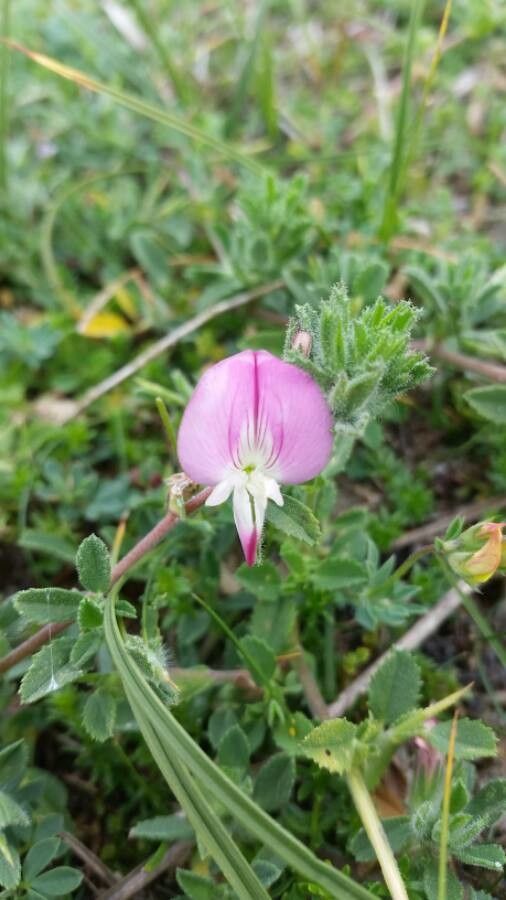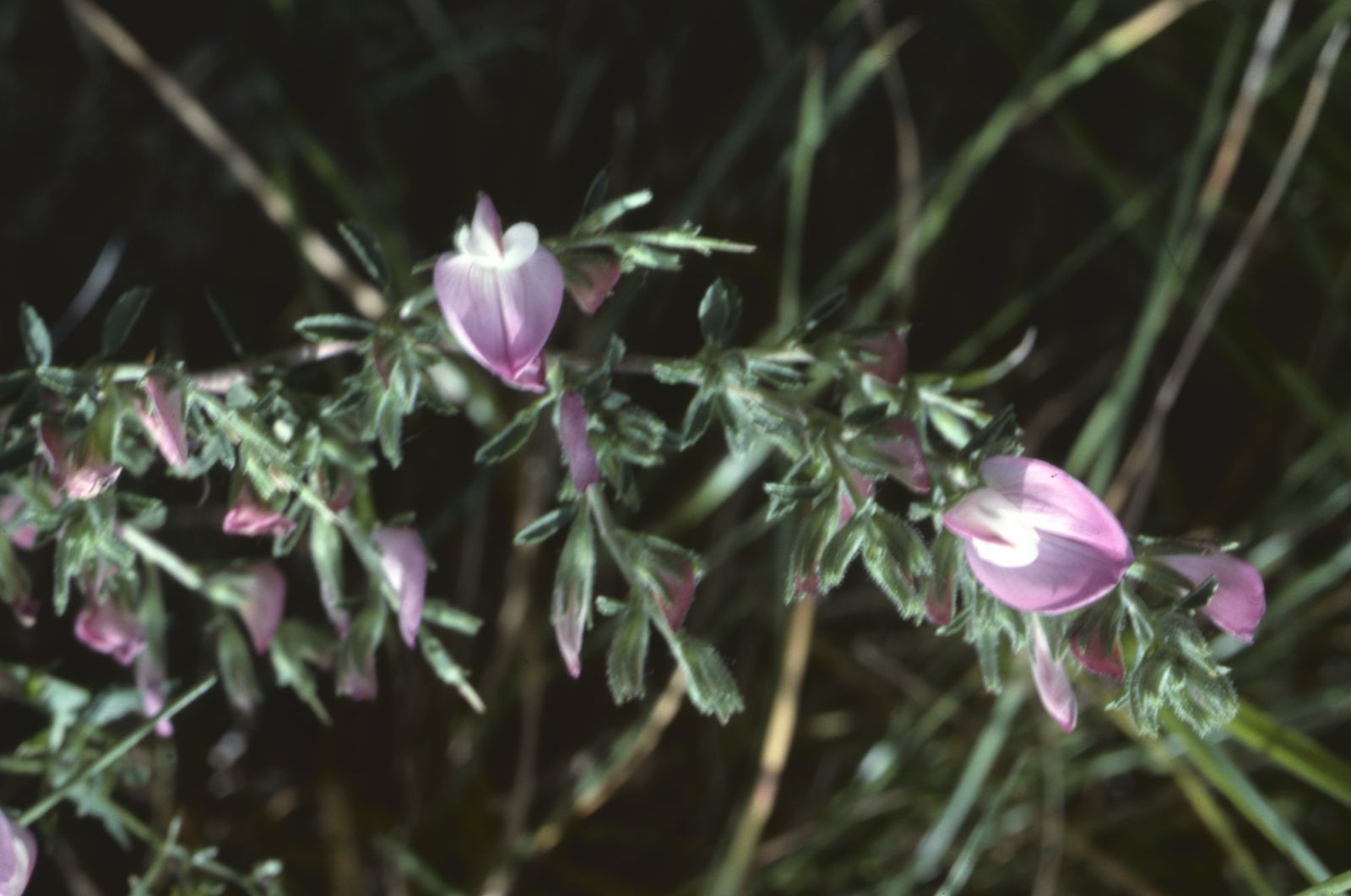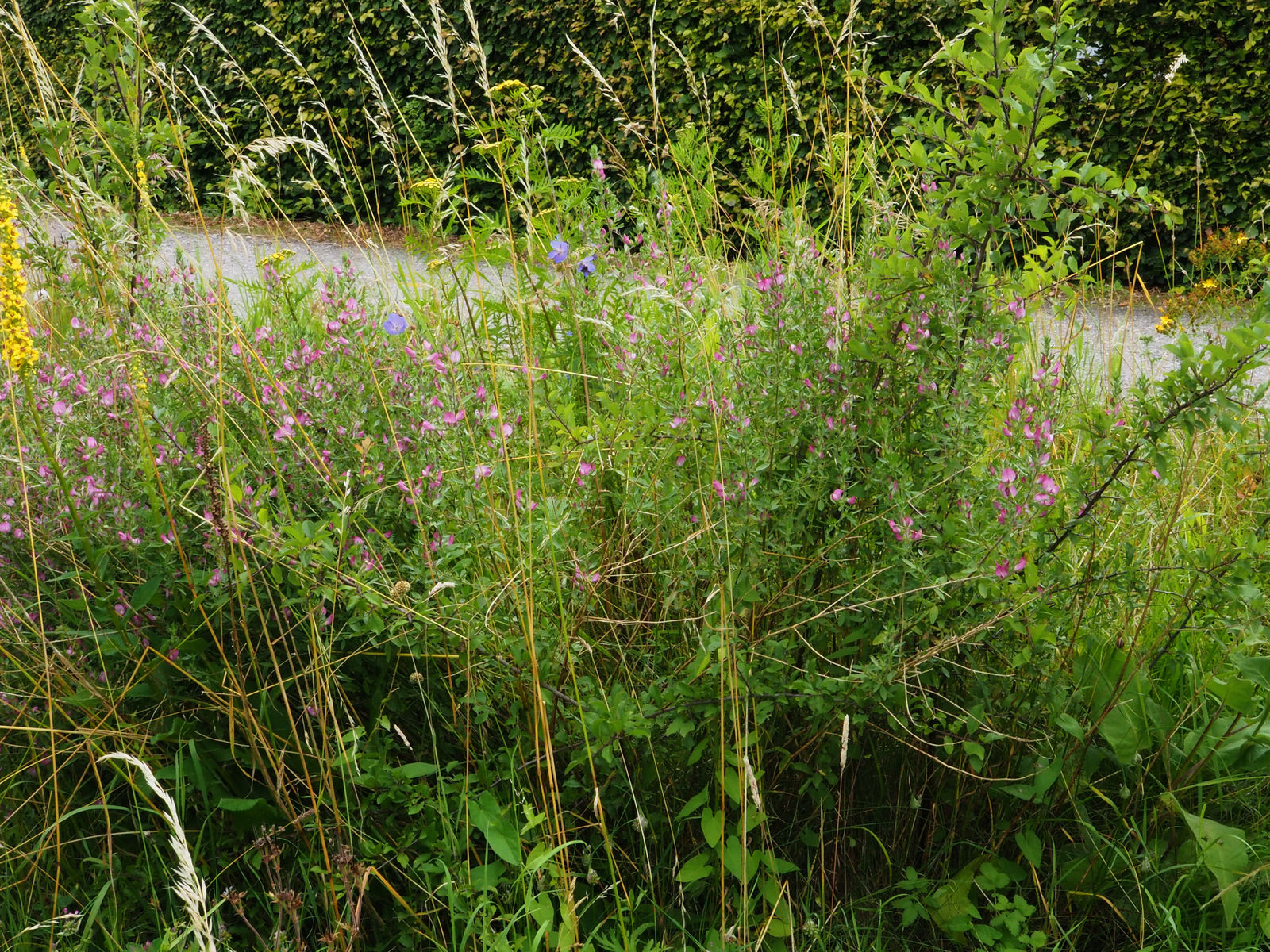Spiny Restharrow
ononis spinosa
Also known as: ["Spiny Restharrow","Gall Weed","Sarothamnus spinosus"]
Overview
A deciduous shrub with spiny stems and pinkish-white flowers, native to Europe and parts of Asia.
Benefits & Perks
["wildlife attractant (bees, butterflies, birds)","drought tolerant","aesthetic foliage"]
Botanical Classification
| Phylum: | Magnoliophyta |
| Class: | Magnoliopsida |
| Order: | Fabales |
| Family: | Fabaceae |
| Genus: | Ononis |
| Botanical Name: | Ononis spinosa |
Plant Characteristics
Basic Information
- Category: Shrubs
- Suitable Location: border plantings, rock gardens, or wildflower meadows
- Suitable For:
- Is Weed: No
- Allergenicity: low
Environmental Needs
- Climate: {"temperatureRange":"–15–35°C"}
- Hardiness: {"zones":"4–8"}
- Misting: rarely required, only if grown in very dry indoor conditions
- Drainage: Fast-draining; avoid waterlogged conditions.
- Soil Type: Well-draining, sandy loam with some organic matter; tolerates poor soils.
Maintenance Level
- Maintenance Level: moderate
- Toughness Level: moderate
- Pruning Frequency: Annually in late winter or early spring; light pruning can be done after flowering.
- Pruning Intensity: Moderate; remove up to one-third of the plant if overgrown.
Care Details
Ideal Sunlight Coverage:
Full sun (6–8 hours/day); tolerates partial shade but may flower less.
Sunlight Tolerance Tips:
Acclimate gradually to intense sunlight; protect from harsh midday sun in hot climates; ensure good air circulation.
Care Requirements
Care Difficulty
moderatemoderate
Sunlight
full sun to partial shade
Rotate plant for even light; use sheer curtains in intense sun; avoid sudden light changes.
Watering
every 7–10 days during active growth, less frequently in winter
Water thoroughly but infrequently; ensure soil dries between waterings; avoid overwatering.
Soil
well-drained, sandy or loamy soil
pH: Slightly acidic to neutral (pH 6.0–7.0).
Use gritty mix; avoid heavy clay; ensure pots have drainage holes.
Temperature
Hardy in USDA zones 4–8; tolerates temperatures between -20°C to 30°C; prefers cool roots.
Avoid sudden temperature shifts; protect from frost; ensure good air circulation in heat.
Fertilizing
every 4–6 weeks during spring and summer, none in fall and winter
Fertilize sparingly; avoid fertilizing in winter; water before and after feeding.
Propagation
Methods
Stem cuttings or division; seeds can also be used but may take longer to germinate.
Step-by-Step Propagation Guide
- Take 4–6 inch cuttings.
- Remove lower leaves.
- Dip in rooting hormone.
- Plant in medium.
- Keep moist.
Best Time: Late spring or early summer when the plant is actively growing.
Environment
Warm, humid environment with indirect light; maintain consistent moisture.
Medium
Well-draining mix of perlite and peat moss or cactus mix.
Hormone
Rooting hormone is optional but can improve success rates.
Timeline
Roots may develop in 4–6 weeks; establishment can take 2–3 months.
Tools Needed
Pruning shears, rooting hormone, small pots, well-draining medium.
Quick Tips
Use healthy, non-flowering stems; maintain humidity with a plastic cover; avoid direct sun.
Pruning & Repotting
Pruning Guide
Method
Cut back stems to healthy buds; thin out crowded areas; remove dead or diseased wood.
Pruning Plan
Prune to maintain shape, encourage bushiness, and remove dead or weak growth.
Tools
Pruning shears, loppers, gloves.
Checklist
Sterilize tools; prune at the right time; make clean cuts; dispose of pruned material.
Repotting Guide
Best Season
Early spring before new growth begins.
Pot Size
Increase pot size by 2–3 inches in diameter.
Method
Remove plant gently; trim roots if needed; place in a slightly larger pot with fresh soil; water lightly.
Suggestions
Repot every 2–3 years or when roots fill the pot; beneficial for container-grown plants.
Checklist
Choose appropriate pot; prepare new soil; handle roots carefully; water after repotting.
Advanced Care Tips
Watering Mastery
Watering Checklist
Check soil moisture; water deeply; ensure drainage; avoid wetting leaves.
How to Apply Water Properly
Water at the base of the plant, ensuring moisture reaches the root zone; allow excess water to drain; water in the morning to reduce evaporation.
Watering Schedule Tips
Water deeply once the top inch of soil is dry; reduce frequency in winter to prevent root rot.
Soil Improvement
Add perlite or sand for drainage; incorporate compost for fertility; ensure good aeration.
Temperature Stress Management
Signs of Temperature Issues
Wilting, leaf drop, or stunted growth in extreme heat; browning or dieback in cold stress.
Cold Stress
Leaves may turn yellow or brown; growth slows; roots can freeze in poorly drained soil.
Solution: Mulch heavily in winter; protect from frost; ensure well-draining soil to prevent root damage.
Hot Stress
Leaves may scorch, wilt, or drop; flowering may cease; growth may slow.
Solution: Provide afternoon shade; increase watering; use mulch to retain soil moisture.
Fertilizing Guide
Fertilizing Checklist
Use balanced fertilizer; apply in spring; water before and after; avoid over-fertilization.
Fertilizing Method
Use a balanced, slow-release fertilizer in early spring; avoid high-nitrogen formulas; reduce or stop in late summer.
Common Problems & Solutions
Toxicity Warning
Cats
Slightly ToxicCats may experience mild gastrointestinal upset if they ingest parts of Ononis spinosa, particularly the seeds and roots. The plant is not highly toxic to cats, but ingestion should be avoided.
⚠️ Symptoms:
🌿 Toxic Parts:
⚡ Toxic If:
if eaten
Dogs
Slightly ToxicIn dogs, ingestion of Ononis spinosa seeds and roots can lead to mild gastrointestinal upset. The plant is not considered highly toxic to dogs, but caution is advised to prevent accidental ingestion.
⚠️ Symptoms:
🌿 Toxic Parts:
⚡ Toxic If:
if eaten
Humans
Slightly ToxicOnonis spinosa contains compounds that can cause mild gastrointestinal distress and other mild systemic effects when ingested in significant quantities. The seeds and roots are the primary toxic parts due to their higher concentration of these compounds.
⚠️ Symptoms:
🌿 Toxic Parts:
⚡ Toxic If:
if eaten
Frequently Asked Questions
Q: Is Ononis spinosa toxic to pets?
A: There is insufficient data to confirm toxicity to pets.
Q: How does Ononis spinosa grow?
A: It thrives in well-drained soils and full sun, with a preference for dry conditions.
Q: Does Ononis spinosa attract wildlife?
A: Yes, it attracts bees, butterflies, and birds due to its nectar-rich flowers.
Quick Reference
| Family: | Fabaceae |
| Care: | moderate |
| Light: | full sun to partial shade |
| Water: | every 7–10 days during activ |
Get Expert Care Tips
Download the Plantious app for personalized care reminders and plant identification!
Google Play App Store








